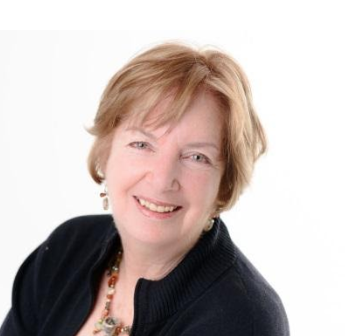My name is Connie Inukai, and I am a 71-year-old entrepreneur.
I haven’t always been one, however. Far from it! For decades, I worked as a professor at the University of Maryland and Johns Hopkins University.
When I retired, I thought that was it—that I would leave my work behind and sit tight. But I couldn’t have been more wrong.
Today I am thriving, in my second act. I am an inventor, a “grandmapreneur,” an author, and a caregiver to two young grandchildren. And I am living proof that the second-act entrepreneur can succeed, if only they focus on what matters most to them.
Entrepreneurship is a mindset at any age
Though
there’s seemingly a startup on every corner, millennials don’t have a monopoly
on entrepreneurship. In fact, baby boomers are twice as likely to start a new
business than their younger counterparts. Furthermore, 45% of people over the
age of 50 consider themselves entrepreneurs.[1]
“People somehow assume that when we are young, we are vital,” says Ken Dychtwald, CEO of AgeWave. “Then, when we pass 40, we are on a downward slope to death.”
But that isn’t the case. “Today’s 50-plus crowd is more educated, active, and mobile,” said Louis J. Foreman, CEO of Edison Nation. “They’re coming up with solutions to problems.”
As a grandmapreneur—a hybrid term I coined to highlight my joint role as grandma-entrepreneur—I have learned to embrace my inventive side. At age 68, after 40 years as a university instructor, I put away my teaching materials and launched my own product.
I invented the Tip ‘n Split®—a handheld device that solved a great challenge facing people over 55: declining vision. Tip ‘n Split® magnifies the text on menus and bills, includes a light source, and completes calculations in one device!

Breaking societal bounds later in life
Far too often, society fails to view the over-50 crowd as creative problem-solvers. There are times we forget this demographic has massive purchasing power—especially when it comes to products for their age group.
With that, here are some statistics that reinforce boomers’ creative potential and spending power:
· There are about 77 million baby boomers in the U.S.[2]
- People over 50 hold more than 75% of the nation’s financial wealth.[3]
- Baby boomers are also spending more than other generations, with Epsilon reporting $548.1 billion in annual spending. This figure is nearly $200 billion higher than Generation X, the next-highest spending generation.[4]
I myself am a boomer entrepreneur inventing products for boomers and the general public. And I’m not an anomaly. I’m constantly inspired by other baby boomer entrepreneurs like Russie Coy Jones, who began inventing in her 50’s while challenged but undaunted by cancer and Parkinson’s; Angela Heath, who helps people over 45 succeed in the Gig market, people who perhaps lost their jobs; Phoebe Rivers, who empowers entrepreneurs to pitch their product; Dr. Barbara Collins, who emphasizes core values to live a meaningful second half of life; and Lisa Ascolese, who helps inventors get exposure—boomers all and bringing their problem-solving skills to the table.
Clearly, we boomers are much more capable than most give us credit for.
Believe only young people can find success as entrepreneurs? Think again.
In my experience as a grandmapreneur, I have found that the over-50 crowd has some advantages:
- Money is less of an obstacle for older inventors.
Inventing requires capital—and most young people do not have a wad of cash they can draw from to develop their product. In my younger years as a single mom, I worried about money all the time. Now, as a woman with grown children, I don’t have that added pressure. Instead, I’ll sacrifice comfort for my business and embrace the notion that “nest eggs are for birds.”
- Second-act entrepreneurs are supportive.
I remember one of my first encounters with like-minded inventors. Seven of us met after a seminar with Home Shopping Network superstar Bob Circosta, and we marveled at how wonderful it was to be with such a supportive group of people. Nobody asked, “Why are you spending your money on this?” We understood and embraced one another.
- Fear of failure is minimal.
At this point in our lives, we have experienced ups and downs. We have found successes, and are no longer afraid of failure. In short, we second-act entrepreneurs have experience, knowledge, focus, and wisdom on our side.
Conclusion
The best part of being an older inventor is that we aren’t doing it for the money. The driving force isn’t a paycheck, but passion!
So, to retirement-age readers: Get out and
follow your dreams. By exploring your interests, you too may end up a
second-act entrepreneur.
- [1] https://www.fool.com/retirement/2017/07/29/9-baby-boomer-statistics-that-will-blow-you-away.aspx
- [2] https://madison.com/business/investment/markets-and-stocks/baby-boomer-statistics-that-will-blow-you-away/article_8f5aed80-4b3d-5586-818a-67466833313b.html
- [3] https://www.suddenlysenior.com/senior-facts-and-figures/
- [4] https://www.marketingcharts.com/customer-centric/spending-trends-107347


